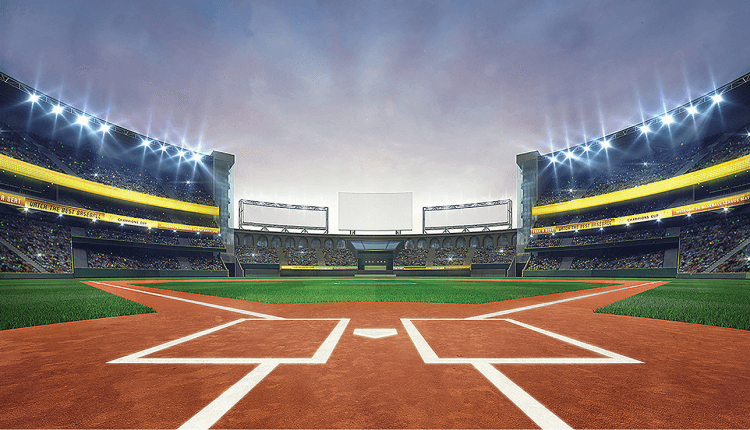 By https://baseballsavant.mlb.com/statcast_search, Fair use, https://en.wikipedia.org/w/index.php?curid=61623613
By https://baseballsavant.mlb.com/statcast_search, Fair use, https://en.wikipedia.org/w/index.php?curid=61623613Well, this feels slightly like cheating. I am continuing the Statcast 101 series but talking about stats that are not statcast metrics. Despite plate discipline not being technical statcast data, they are still valuable metrics for evaluating hitters. Most of the numbers we will discuss today can be pulled from Fangraphs, but you can also find them on Baseball Savant.
Baseball Savant and Fangraphs are both likely a resource you use when evaluating players. You may see stats on those websites that you do not know what they mean. This article series has the intention to help you learn more about specific statcast data and other stats and how you can use that data to analyze players for Fantasy Baseball. It is important to note that a player’s statcast profile does not paint the entire picture. It is just another tool in the toolshed. So, let’s look at a couple of stats and how they are practical for Fantasy Baseball. So, let’s talk about some plate discipline metrics and what they mean.
- Part 1: Exit Velocity and Hard-Hit Rate
- Part 2: Barrels, Launch Angle, Sweet Spot
- Part 3: Expected Stats
Plate Discipline Metrics for Evaluating Hitters

Take a look at the plate discipline profile on Fangraphs. You can probably guess by the Washington Nationals that this is Juan Soto. Soto has elite statcast metrics, as we have discussed in previous articles, but what about his plate discipline? To no surprise, most of Soto’s metrics come out high-end compared to league average, which you can find in the shaded rows. Looking at this profile on Fangraphs for hitters is very important. But what do all these stats mean? Let’s talk about them.
Useful Plate Discipline Metrics
Contact Percentage
One of the first metrics I look at is contact percentage. Contact percentage is the number of pitches in which contact was made divided by all swings. If a hitter has a low contact rate, it usually leads to inconsistent, streaky performance. Nearly every hitter with a low contact percentage is usually a streaky performer. Fernando Tatís Jr. is the rare exception. His 67.2 percent contact rate was tied for fourth-worst among all qualified hitters in 2021. We all know how Tatís performs despite the low contact rates.
League average contact percentage last season was 76.1 percent. Anything above 80 percent is good, while 90 percent and higher is considered elite. Ideally, you want to draft hitters on your team that have above-average contact rates or better.
Zone Contact Rate
Zone contact rate is another helpful metric that builds on the overall contact rate. It is sometimes called Z-Contact rate, which is the number of pitches in which a hitter makes contact on pitches inside the strike zone divided by the hitter’s total number of swings in the zone.
Not every hitter with bad contact rates also had bad zone contact rates. Hunter Dozier is a player who stands out for having a contact rate below 70 percent, but his zone contact is a solid 87 percent.
League average on zone contact was 84.6 percent in 2021. Eighty-eight percent or higher is a good zone contact rate, but getting above 93 percent puts you in elite company.
Swinging Strike Rate
Swinging strike rate or SwStr% is how often a hitter swings at a pitch and misses. The league average in 2021 was 11.2 percent, which is right in line with the previous two seasons. The picture above shows that Juan Soto posted an impressive 6.1 percent swinging-strike rate in 2021, which was the 14th best in baseball. Several players posted swinging strike rates below five percent, including Myles Straw, Michael Brantley, and David Fletcher.
Swinging strike rate has a strong correlation with contact rate. Javier Baez posted the league’s worst swinging-strike rate at 21.7 percent. That was three percentage points higher than the next worst hitter in Sal Perez. Eight of the top ten worst hitters based on swinging strike rates were also among the worst ten in contact rate. The interesting thing is there are some intriguing Fantasy players among them. Javier Baez, Salvador Perez, Fernando Tatís Jr, Tyler O’Neill, and Brandon Lowe rank in the top eight in the highest swinging strike rates. These are players that I typically like to avoid for Fantasy, with some exceptions (like Tatís).
O-Swing Percentage
O-Swing percentage, sometimes referred to as Chase Rate, is the percent of pitches outside of the zone that a hitter swings at. This stat helps understand how good a hitter is at laying off bad pitches. The league average in 2021 was 31.1 percent.
Juan Soto’s elite plate discipline stands out here as he has the lowest O-Swing rate by four percentage points. His 15.1 percent O-Swing rate is highly impressive!
If you are in an OBP league, be sure to look at O-Swing percentage as it can be helpful in identifying hitters who typically walk at a high rate. Also, hitters with a higher O-Swing percentage can fall into the category of poor contact. The correlation is not as strong here. But O-Swing is a stat worth looking into.
These plate discipline stats are the ones I find most useful. They all have a practical use for Fantasy Baseball stats. I hope you will dive into these metrics a little deeper and find players that may be solid targets in your drafts.
